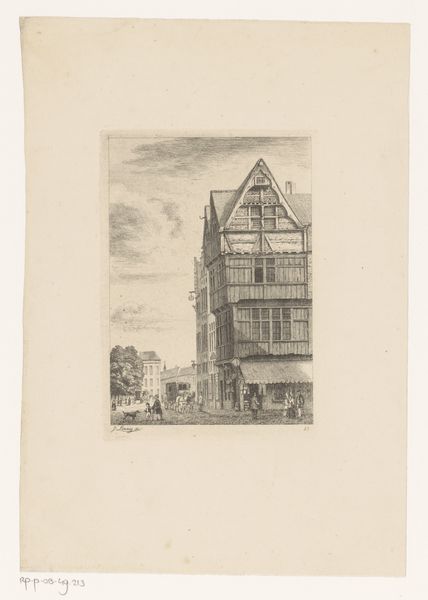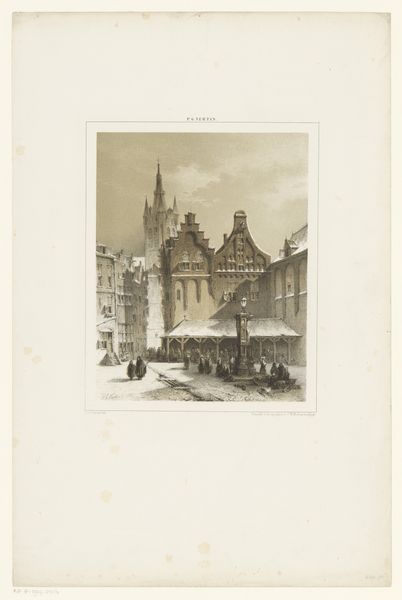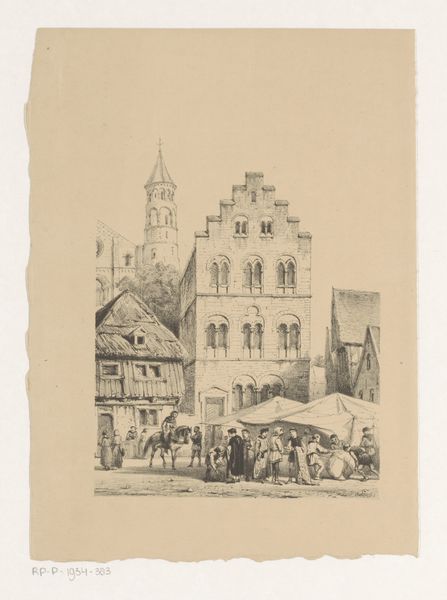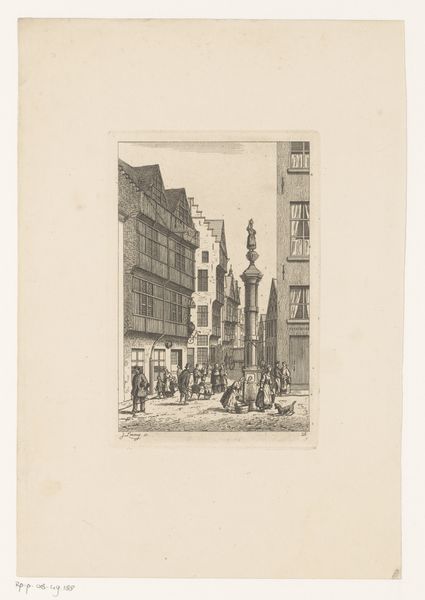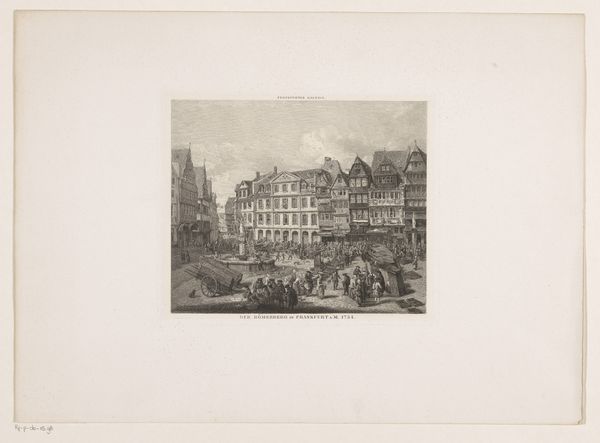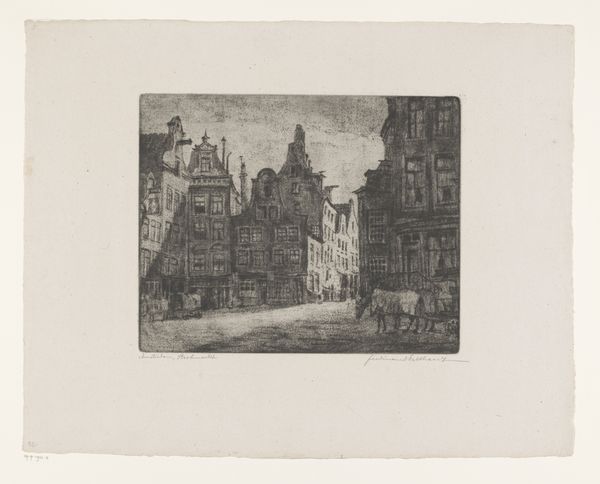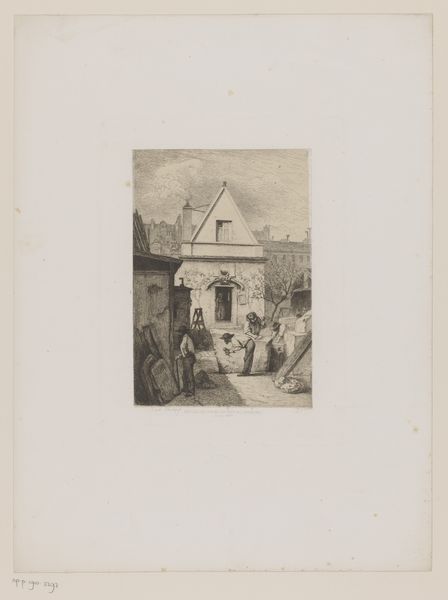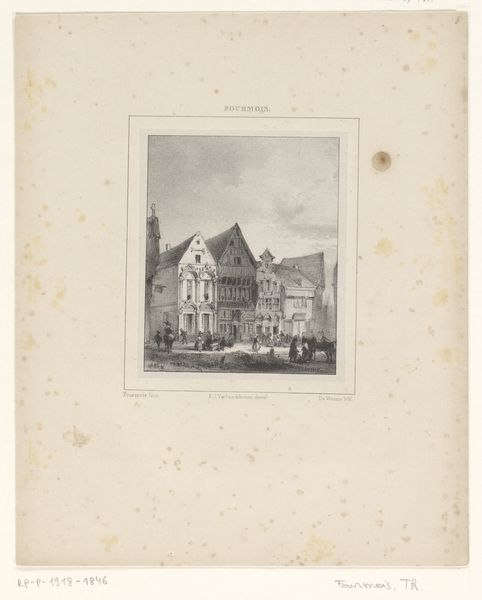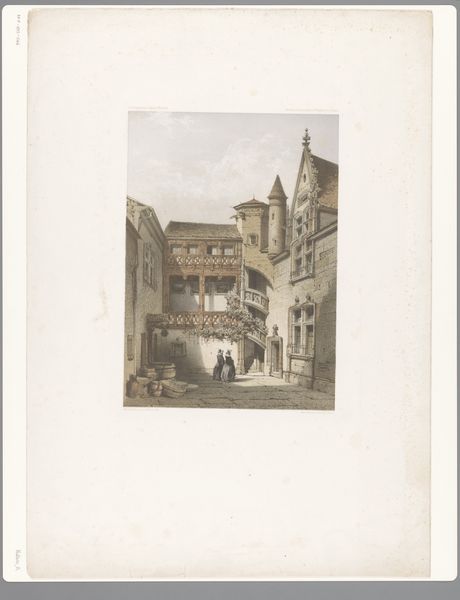
Dimensions: height 387 mm, width 293 mm
Copyright: Rijks Museum: Open Domain
Curator: Before us hangs Cornelis Springer's "Twaalfde-eeuwse huizen," which translates to "Twelfth-Century Houses," a watercolour print crafted prior to 1861. It’s currently housed here at the Rijksmuseum. Editor: There’s a soft, almost dreamlike quality to this piece, isn't there? The gentle washes of color create a delicate harmony and the subdued palette brings a quaint stillness, like a frozen moment in time. Curator: Springer specialized in cityscapes. Notice how this artwork is far from an objective rendering of architecture, instead, it speaks more to 19th-century romanticism, idealizing a historical view of the city, filtered through a lens of nostalgia. The precise detailing clashes a bit with the style overall, however. Editor: Precisely. It's that very tension between detail and looseness, between line and wash, that fascinates me. Observe how the architectural elements in the center hold rigid shapes while those farther back in the composition bleed. The sharp geometries of the buildings play with the softened background tones to produce space. Curator: And don't forget, these cityscapes served an important function. In a rapidly industrializing Netherlands, these idyllic visions offered a comforting connection to a perceived, simpler past. Springer sold a collective sense of memory and cultural pride. Editor: A point well taken. The artist really does direct our gaze by anchoring it centrally through the sharp, dark-inked lines of that center building and gradually dissolving into airy watercolour. But there's a narrative here too, those townspeople in the middle; I just wish the style suited the moment a bit better. Curator: The buildings represent Dutch heritage. Meanwhile, the small figures animatedly engaging, remind us that city squares have always been places for gathering and transacting, an optimistic visual that soothed the worries of his contemporary audience in the face of significant societal shift. Editor: So it does become more than a scene of a square: it's a reflection on architectural values and history itself! Thanks, that brings even more nuance to the structure of this artwork. Curator: My pleasure. It’s a fascinating insight into how art can function as both historical record and social commentary. Editor: A charming interplay between the eye and the world outside, really.
Comments
No comments
Be the first to comment and join the conversation on the ultimate creative platform.


